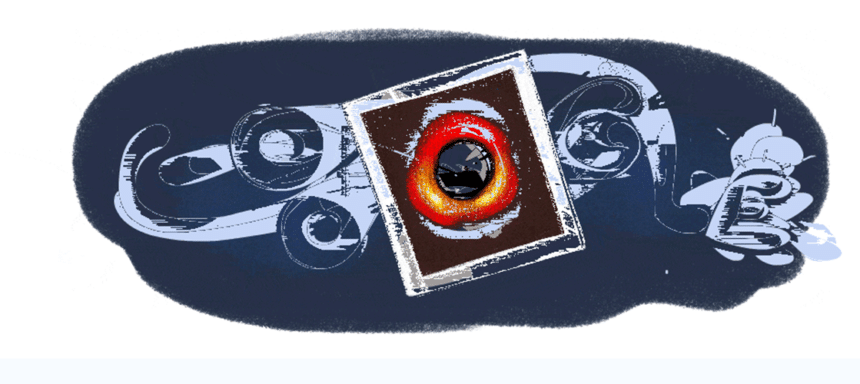Image Courtesy: Google Doodle
The first image of a black hole was captured by the Event Horizon Telescope (EHT) 0n 10 April 2019. The EHT is a network of radio telescopes that work together to create a virtual telescope the size of the Earth. This network was used to capture the image of the supermassive black hole at the center of the Messier 87 (M87) galaxy, which is located approximately 55 million light-years from Earth.
The image shows a bright ring of gas and dust surrounding a dark circular region, which is the shadow of a black hole. This region is known as the event horizon, which is the point of no return beyond which anything that enters is consumed by the black hole’s gravitational pull.
The image was a major scientific breakthrough and provided the first direct observational evidence of the existence of black holes, which were first predicted by Einstein’s theory of general relativity. It also provided important information about the behavior of matter around black holes and helped to confirm many of the predictions of theoretical astrophysics.
The team of researchers involved in the project received several awards and honors for their work, including the Breakthrough Prize in Fundamental Physics in 2020. The first image of a black hole is considered a significant achievement in the field of astronomy and has opened up new avenues for research into the properties and behavior of these enigmatic objects.
On 10 April 2019, Google celebrated the first image of a black hole with a Google Doodle. The Doodle featured an animated representation of the black hole and the surrounding accretion disk, as seen in the historic image captured by the Event Horizon Telescope (EHT).
The Doodle also featured the EHT logo and a small animation of the network of telescopes working together to create the image. The image was widely celebrated as a major scientific breakthrough and was a major topic of discussion in the scientific community and the media.

